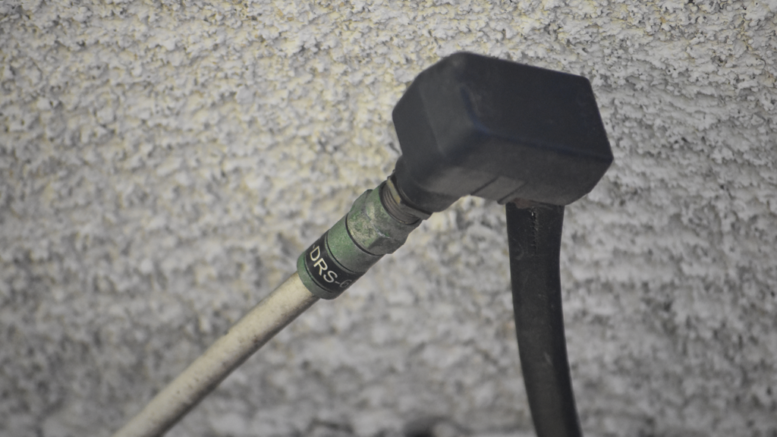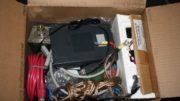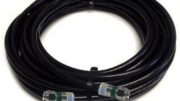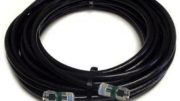Hang around this hobby long enough and you’ll end up with dozens of feet of old cables. It’s just… an occupational hazard if you will. You don’t want to get rid of it because you know you’ll use it for something. So if you’re going to keep old cables around, at least know the symptoms of a cable that’s gotten to old and too beat up to use.
Most important: corrosion
The image above is a pretty bad case. If you see the ends of your cables turning green, that’s a sign that things have become pretty corroded. It wouldn’t be so bad if the corrosion only went as far as the outside of the cable. Chances are, it hasn’t. Corrosion like that is caused by water getting onto the connector and it probably got to the inside too. Oxidation makes it harder for electricity to travel through copper wires. Any cable with any oxidation at all should just be recycled or thrown away (depending on local laws and your conscience.)
Almost as important: the rubber sheath

The rubber outer part of cables can get eaten up too. The sun can make it brittle and in some cases even bugs can start eating the outer part to get to the inner part. Again the image you see above is a very extreme case. This is a cable that should never ever be used, but if there is any scratch, any pit, any crack in the outer part of a cable it should not ever be used.
If the outer sheath shows signs of folding, for example a weakend or discolored crease, it shouldn’t be used either. Folding a cable can destroy the delicate dielectric foam on the inside.
Look carefully for weak connectors
If you’re pulling a cable off the shelf, tug or play with the connector a bit. Don’t be too violent but use just a little bit of force to see if the connector is firmly attached. If the connector shifts or even worse starts to come off, it should be replaced. You may be able to reuse the rest of the cable but the connector should always be on there nice and tight. If it’s loose, that’s a sign that air could be getting into the inner parts of the connector and causing oxidation that you can’t see.
Not even worth keeping: cheap cables with molded ends.

While a molded plastic end doesn’t necessarily mean a cable is useless, it does mean you should look carefully. I went into detail here in this article, explaining that molded ends usually mean a lower quality cable. That may be ok for antennas but for cellular or antennas, you should probably avoid them.
The cable you see above is one from a test series I did many years ago. I got it from a dollar store and as far as I can tell, it wasn’t even worth a dollar. Cables that look like this are made to the lowest possible standards and you can’t depend on them no matter what. If you have any of these in your bucket ‘o cables, I’d just get rid of them.
Shop for new quality cables at Solid Signal
Why keep old cables that aren’t reliable? You can get great, top-quality cables whenever you need them, just by shopping the great selection at SolidSignal.com. Need help choosing the right cable? Call us at 888-233-7563 during East Coast business hours.




